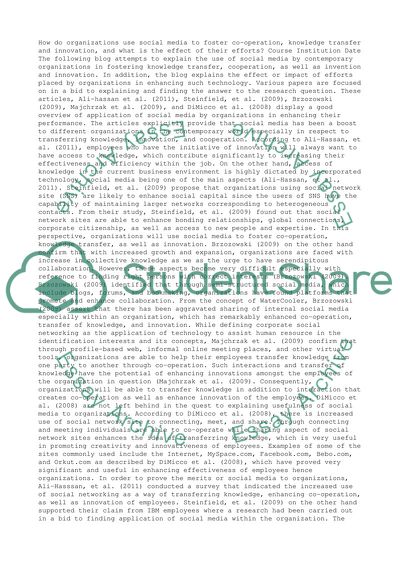How Do Organisations use Social Media to Foster Co-operation, Essay. Retrieved from https://studentshare.org/management/1448261-how-do-organisations-use-social-media-to-foster-co
How Do Organisations Use Social Media to Foster Co-Operation, Essay. https://studentshare.org/management/1448261-how-do-organisations-use-social-media-to-foster-co.


